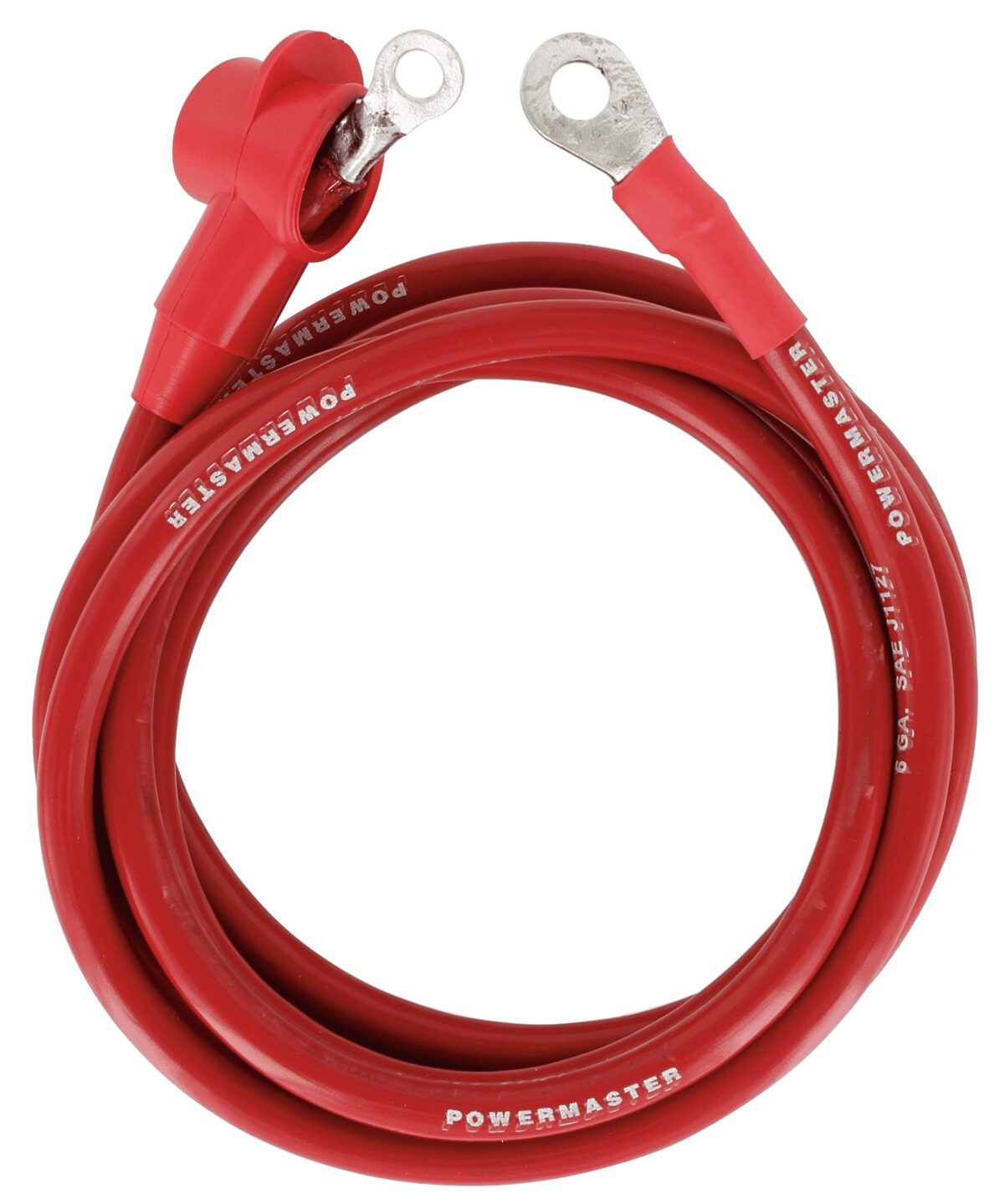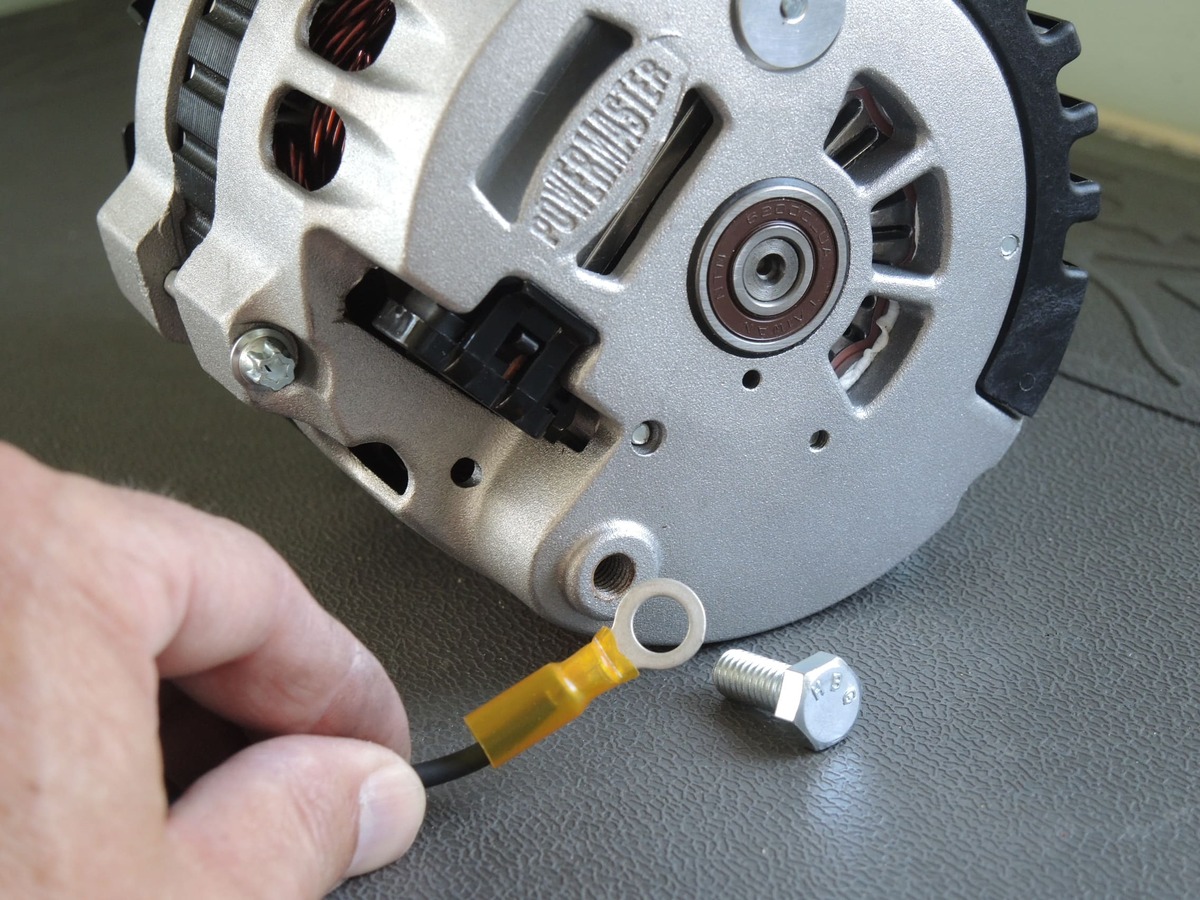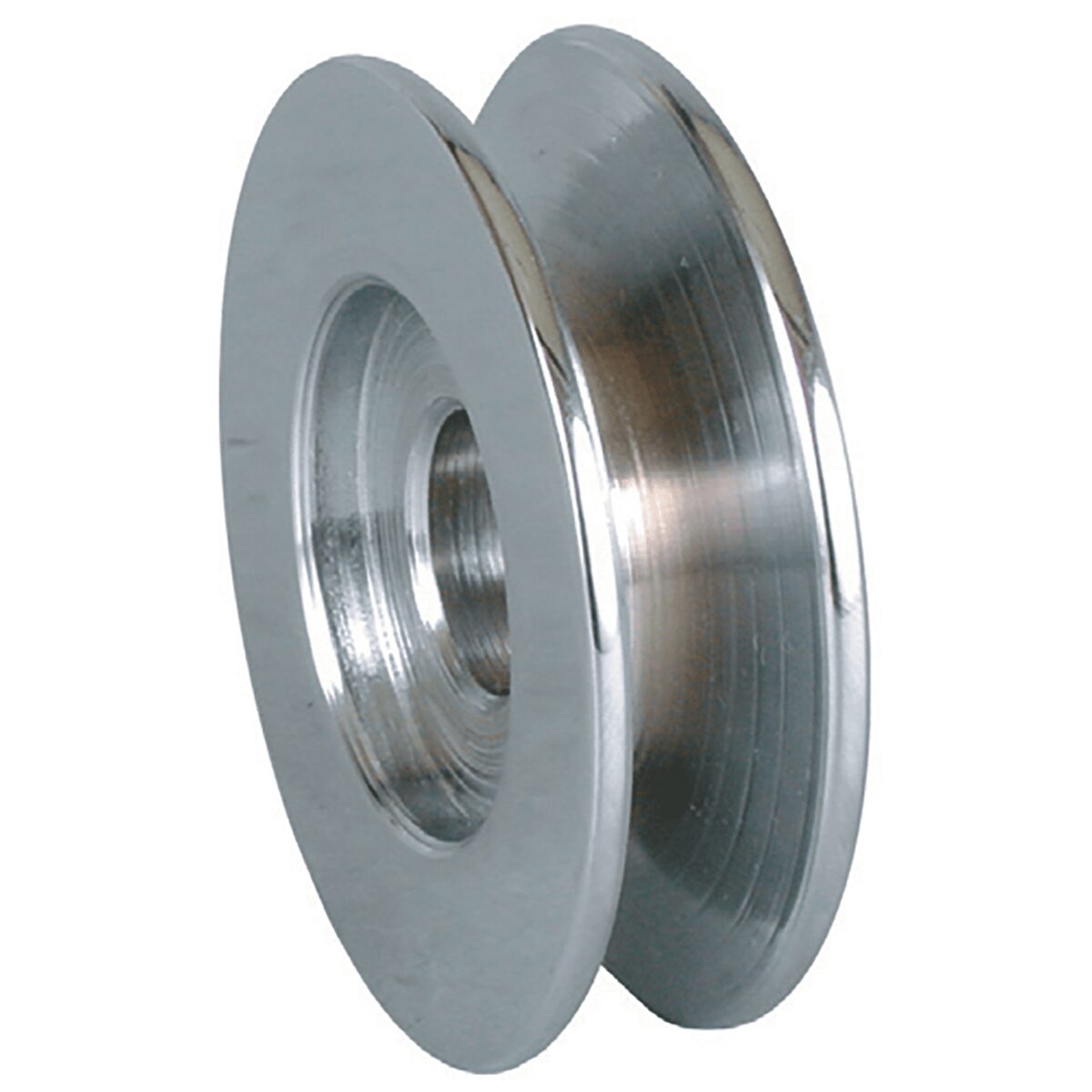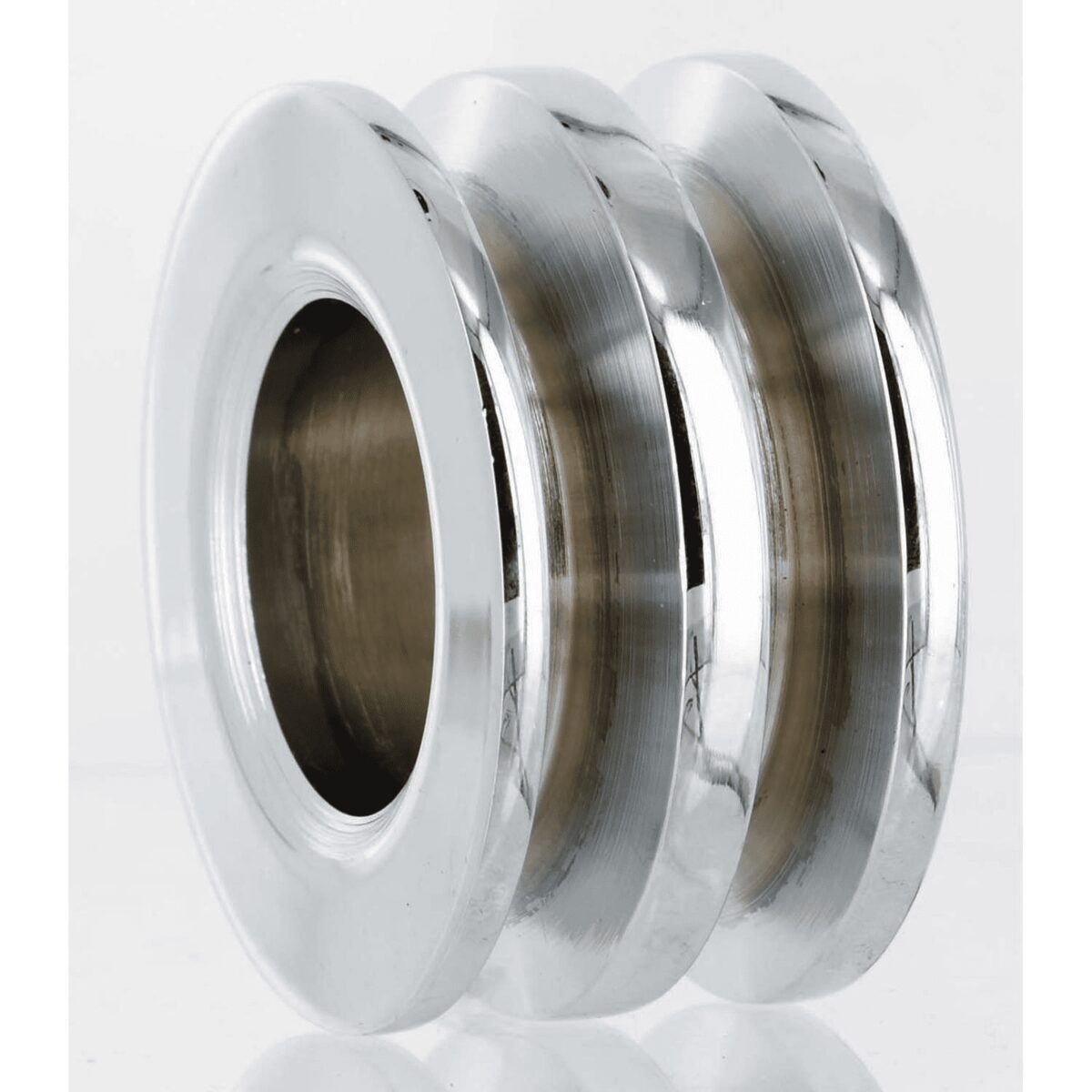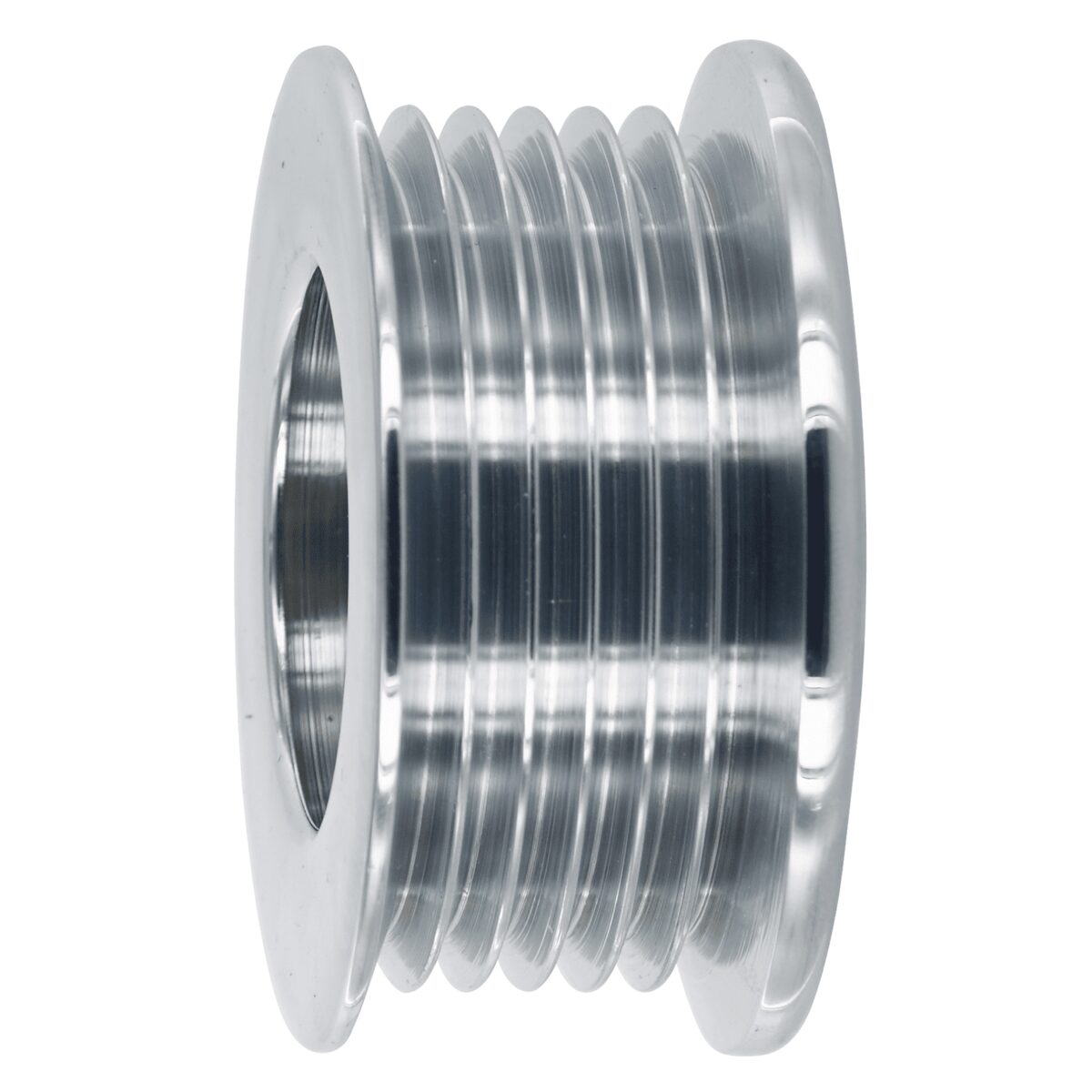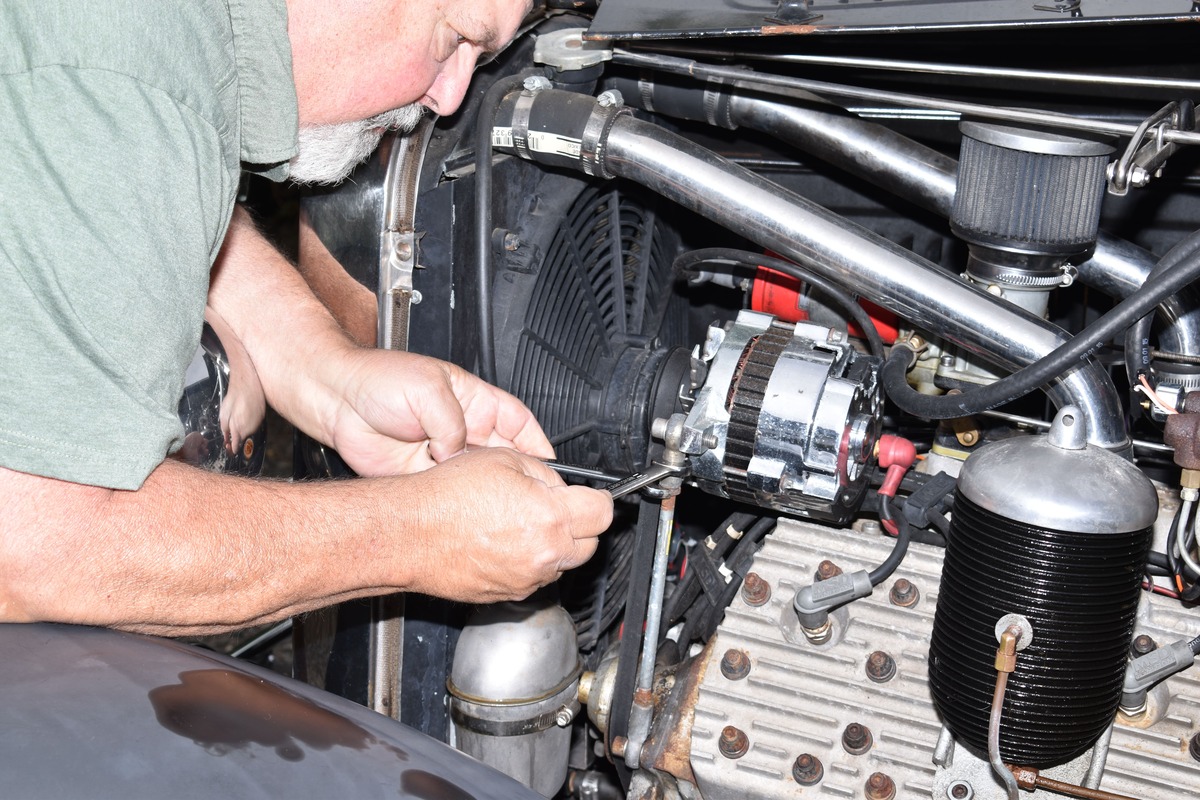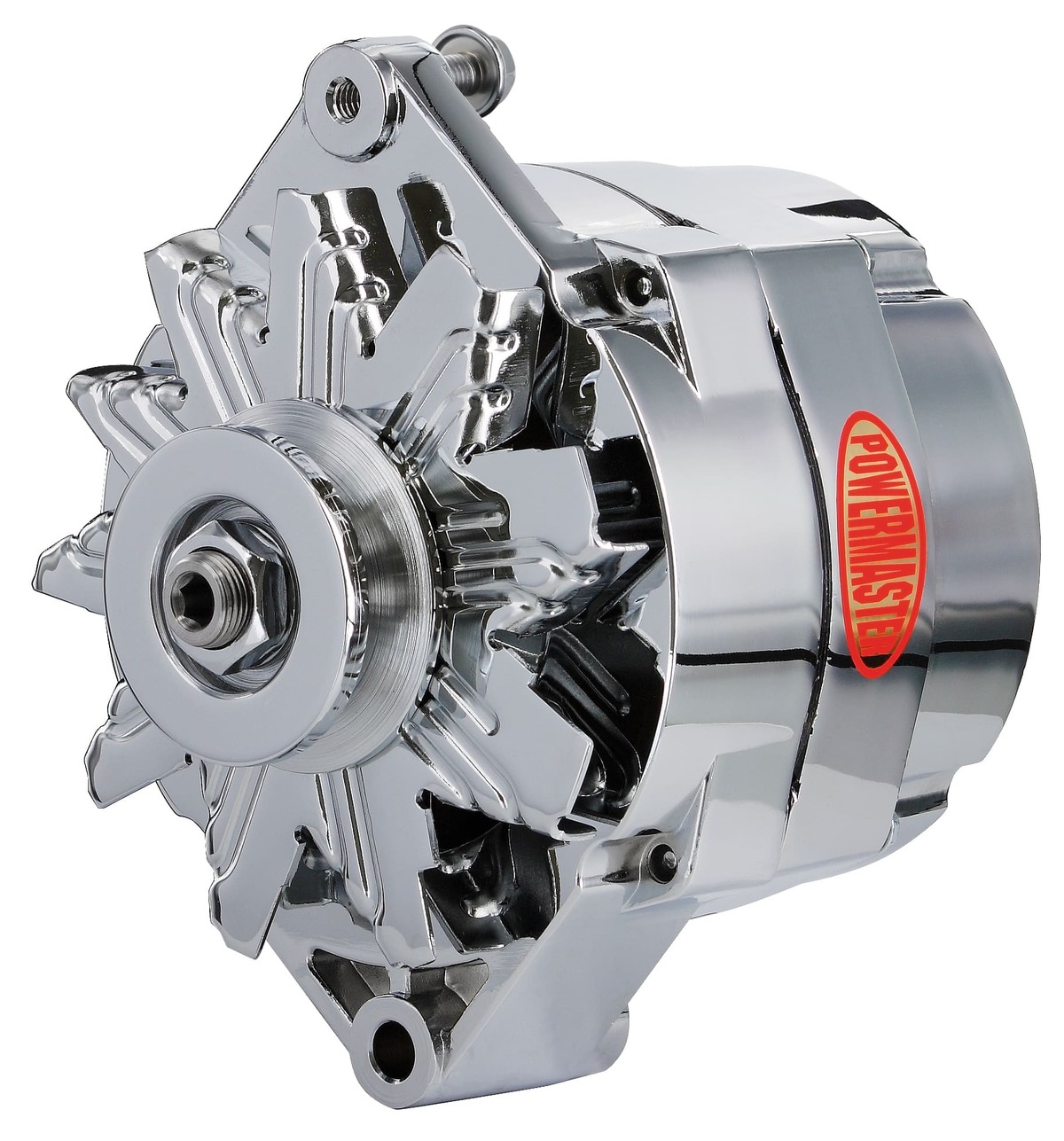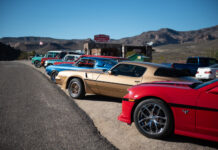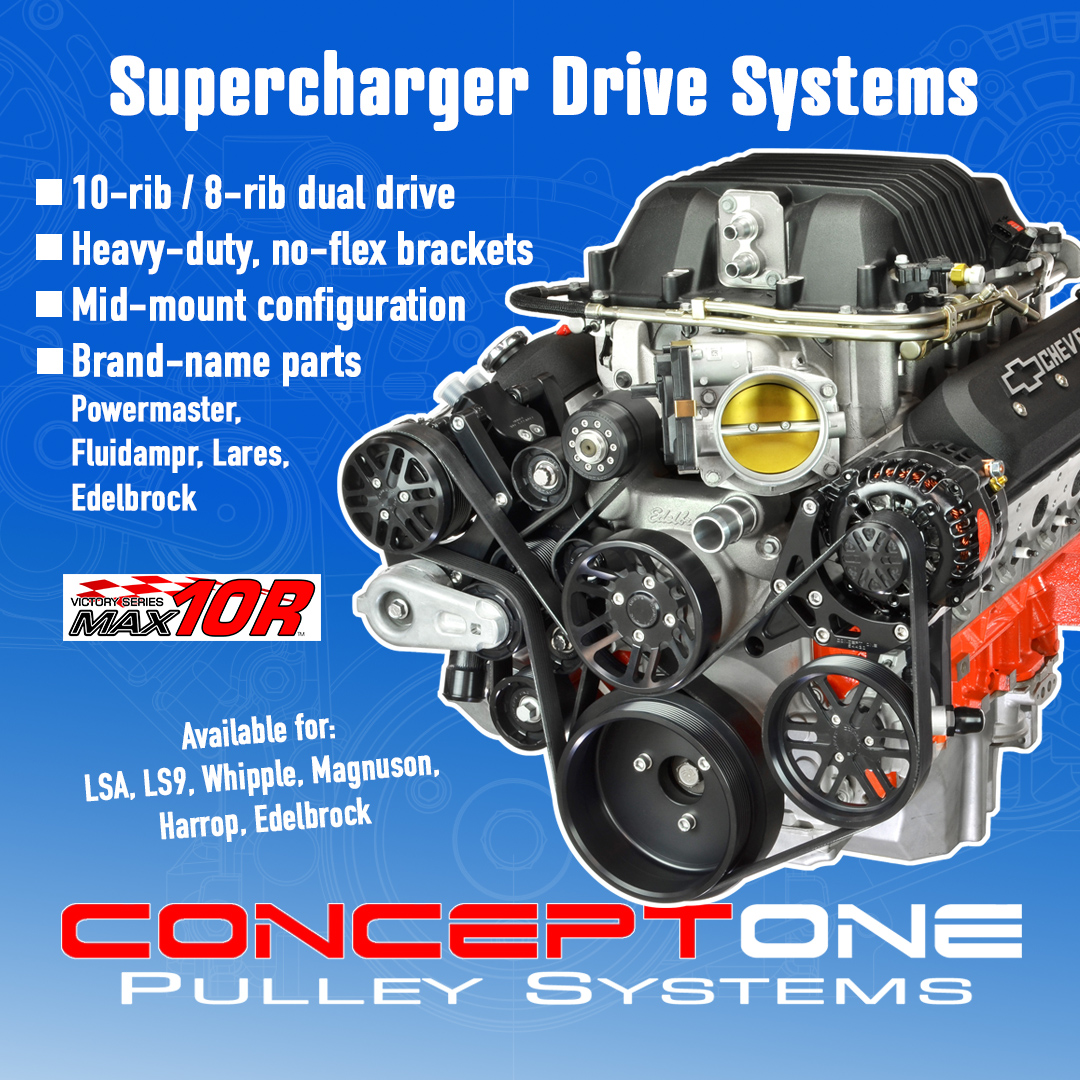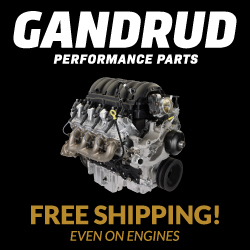How to Select the Correct Hot Rod Alternator
By Ron Ceridono
At one time the demands on an automobile’s electrical system were simple—the engine’s ignition and starting circuits, rudimentary lighting, maybe a heater, and that was about it. But how things have changed. Today the electrical equipment on cars often includes a long list of electron-gobbling devices, such as high-intensity lighting, climate-control systems, engine-cooling fans, fuel pumps, power windows and seats, air suspension compressors, elaborate stereo systems, and more—and we’re not just talking about cars on showroom floors but many contemporary hot rods, too.
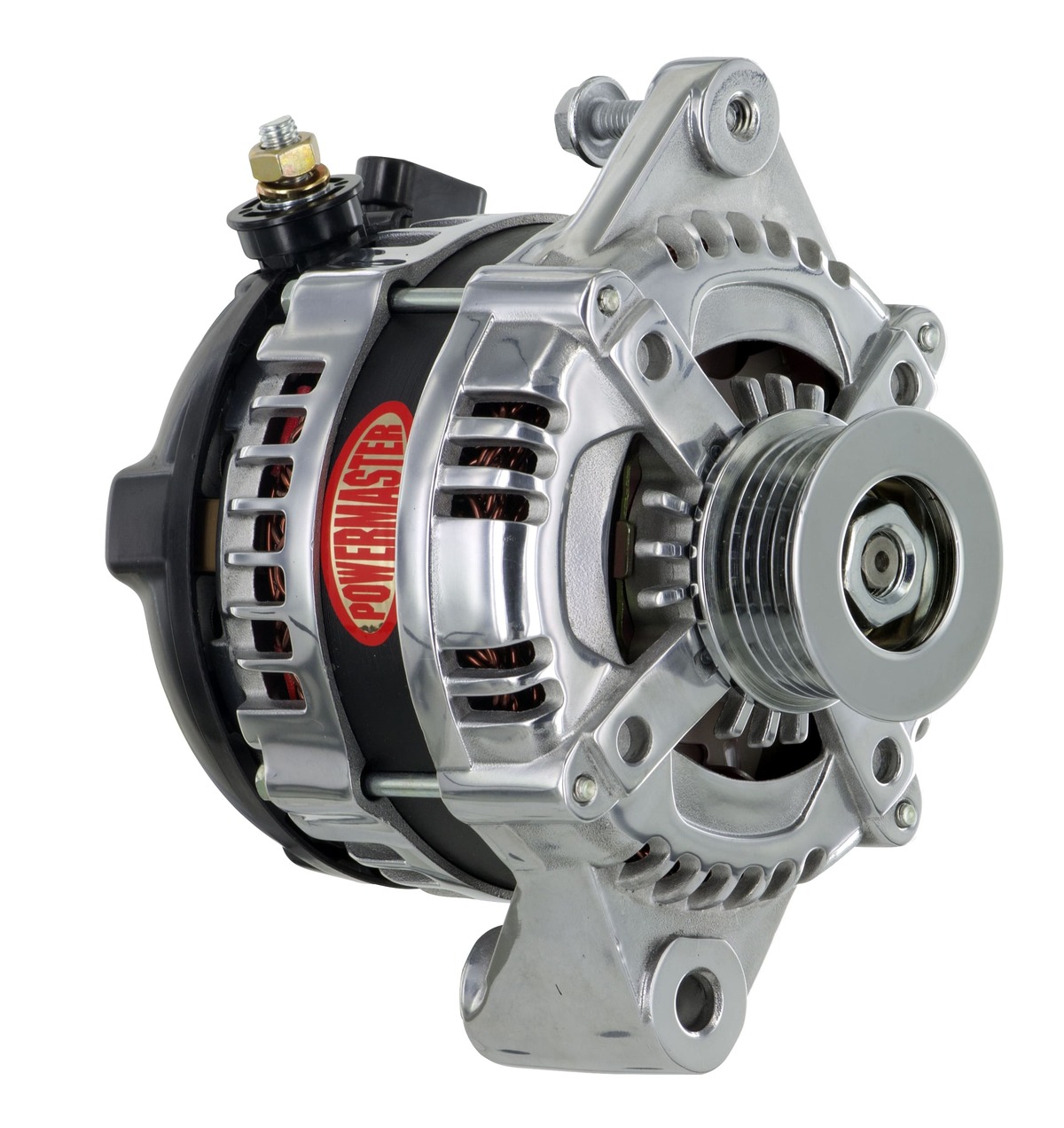
With the increased number of electronic items being added to hot rods, selecting the proper alternator is critical. To do that, there are some common definitions and terms you should know:
In simple terms, electricity is the flow of electrons from one atom to another through a conductor. A conductor is something electricity can pass through while an insulator is something electricity can’t pass through.
Voltage: electrical pressure, or the push that sends electrons through a conductor. Measured in volts, 12 V has greater electrical pressure than 6 V.
Current: the volume of electrons flowing in a circuit. It’s measured in amperes, or amps. If voltage is increased, more electrons flow. A case in point, if you turn your car’s headlights on with the engine off, as soon as you start the car and the charging system increases the system’s voltage, current flow increases and the lights get brighter.
Resistance: the opposition to current flow. Resistance is like electrical friction and as a result it can create heat—that’s a good thing in the case of a light bulb; the element gets so hot it glows, which creates light. However, excessive resistance in a wire also creates heat, which can lead to serious problems up to and including a burned-up wiring harness or even a destroyed vehicle.
AC-DC: Not the rock band that’s on Brian Brennan’s favorite T-shirt, it stands for alternating current and direct current, which refers to the direction the electricity travels—homes are AC, while batteries and automobiles are DC.
Diodes: these are a one-way electrical device that allows current to flow one way but not the other. Diodes are found in a number of electronic devices, most notably in alternators where they transform AC to DC.
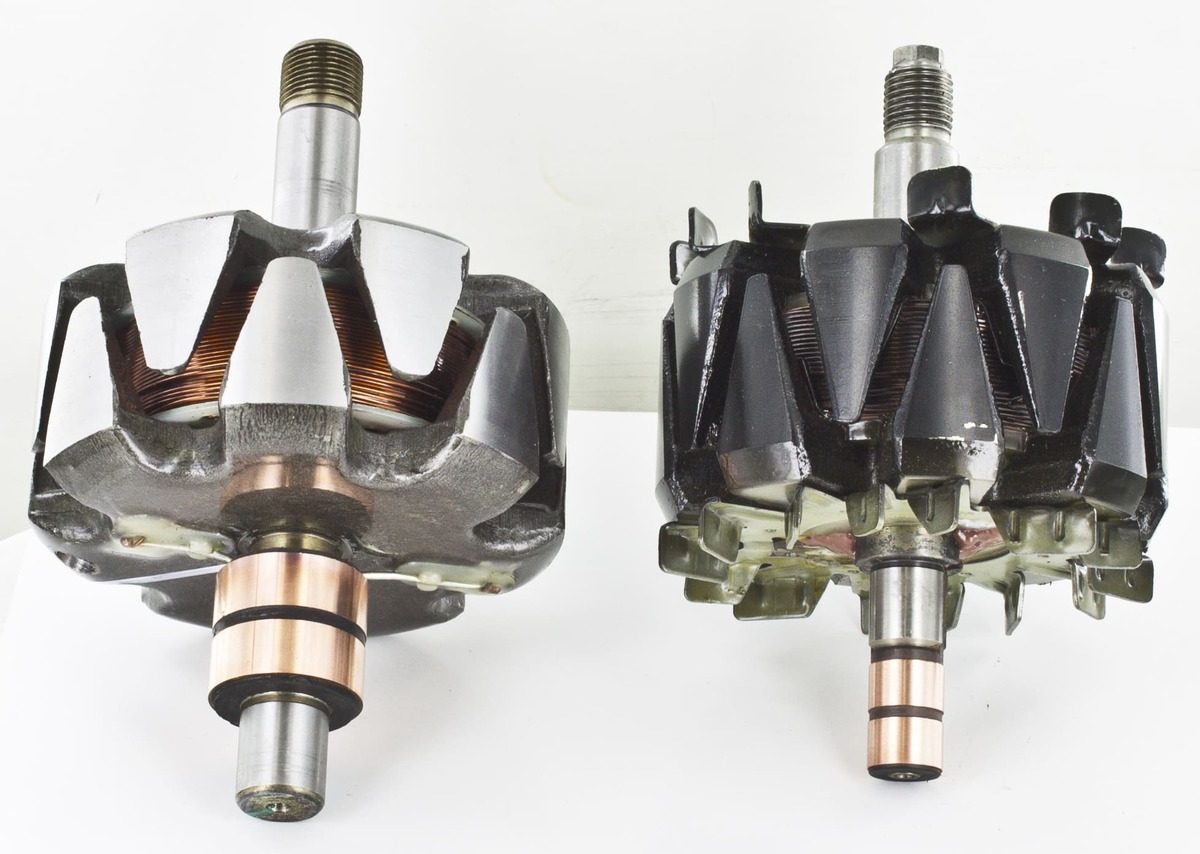
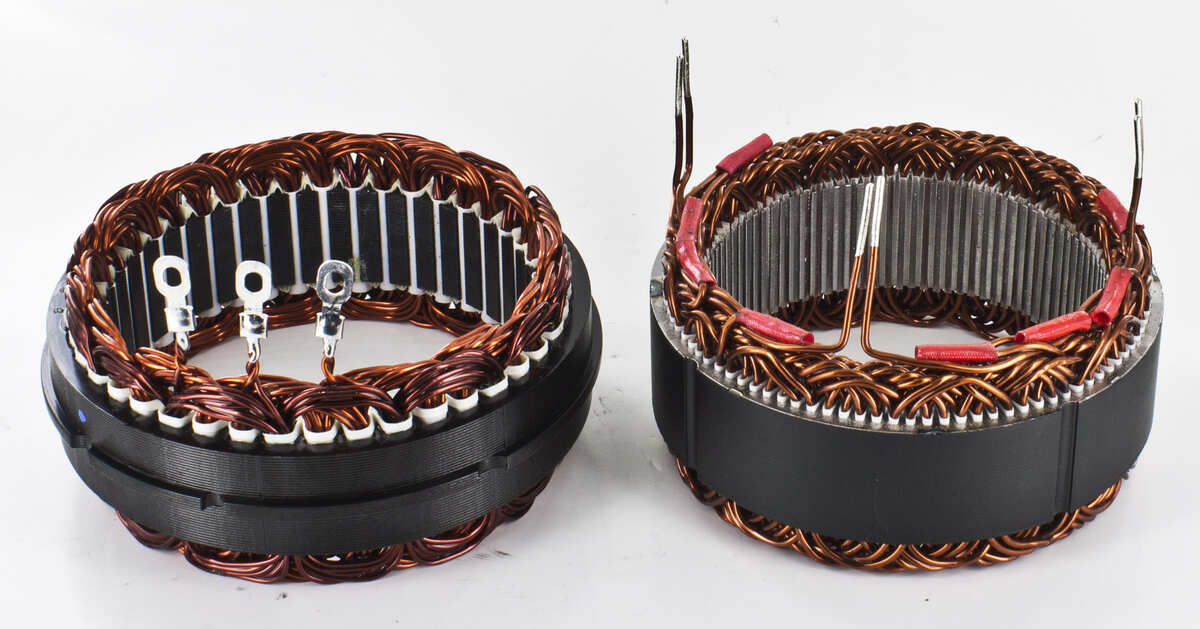
Producing Electricity
There’s a basic relationship between electricity and magnetism. When electricity is flowing through a wire, there is a small magnetic field generated around the wire, and when a wire moves through a magnetic field, a small amount of current or electricity is generated in that wire. Creating electricity is a simple a matter of moving one past another continuously. A generator produces electricity by rotating loops of wires called an armature inside a fixed magnetic field. An alternator spins a magnetic field (a rotor) inside of stationary windings called a stator. In operation an alternator produces alternating current, which has to be converted to direct current for use in an automobile. That is accomplished by what is called a rectifier, which is a series of diodes.
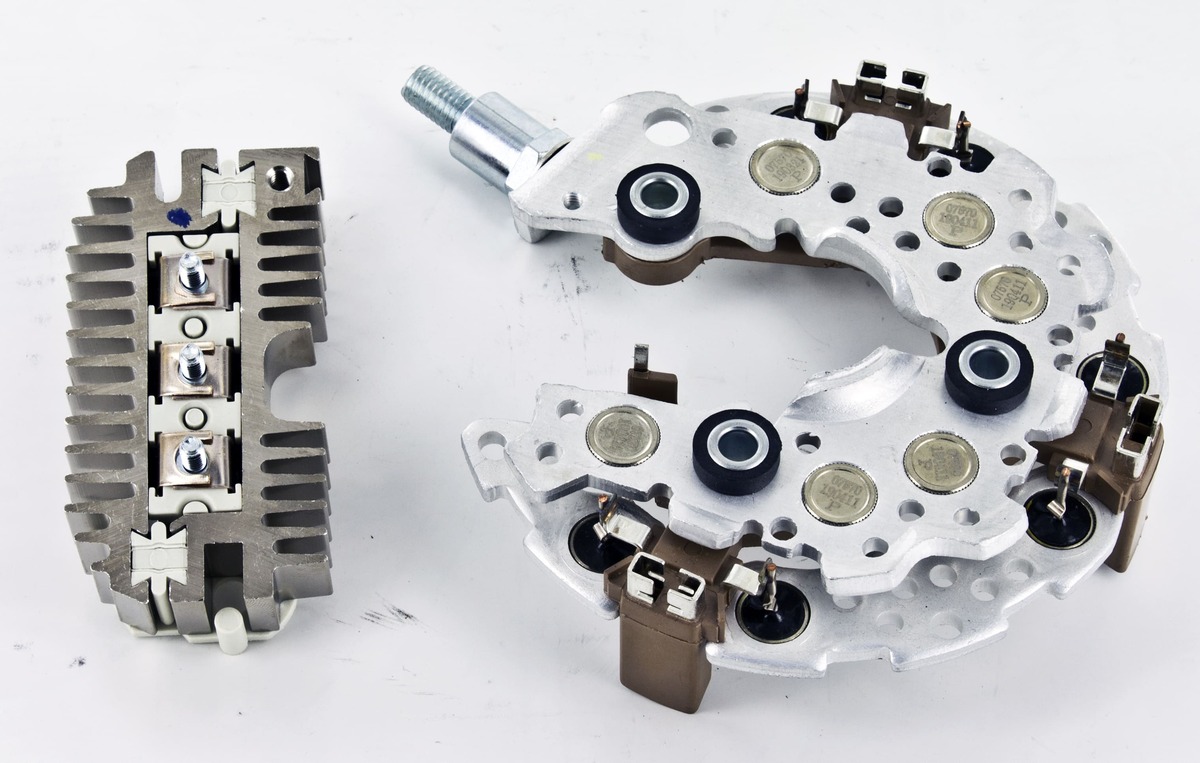
How Much Alternator Output is Enough?
When selecting an alternator, first you must know how many amps the electrical system consumes. This can be figured two ways. The easiest way is to add the total amp requirements of all components together. Generally, all electrical items will have their supply demands included with the instructions.
Another method is to use an inductive ammeter with a “peak hold” function clamped around the positive battery cable. While the latter method would be more accurate since it would be testing the electrical system as a whole in real world conditions, it’s not always the most practical. The point is that when everything is turned on at the same time, the amperage demands on the electrical system can be surprisingly high, so select an alternator accordingly. Keep in mind that a “cushion” should be included in the selection process. A good rule of thumb to prevent overheating and ensure longevity is the alternator shouldn’t exceed 80 percent of its rated output.
While alternators are rated by their amp output this can be deceiving because this output is not linear, rather it follows a curve related to engine speed. In situations where electric cooling fans, climate-control systems, and other large draws are part of the system the alternator’s output at idle is often critical. To ensure the electrical energy required is always available Powermaster has a complete line of high-output alternators, including their new HPR small frame designs that put out 145-plus amps at idle, 165 at cruise, and 175 on the top end. Keep in mind, the voltage regulator controls the alternator’s output so the alternator will only produce the electricity the system requires.
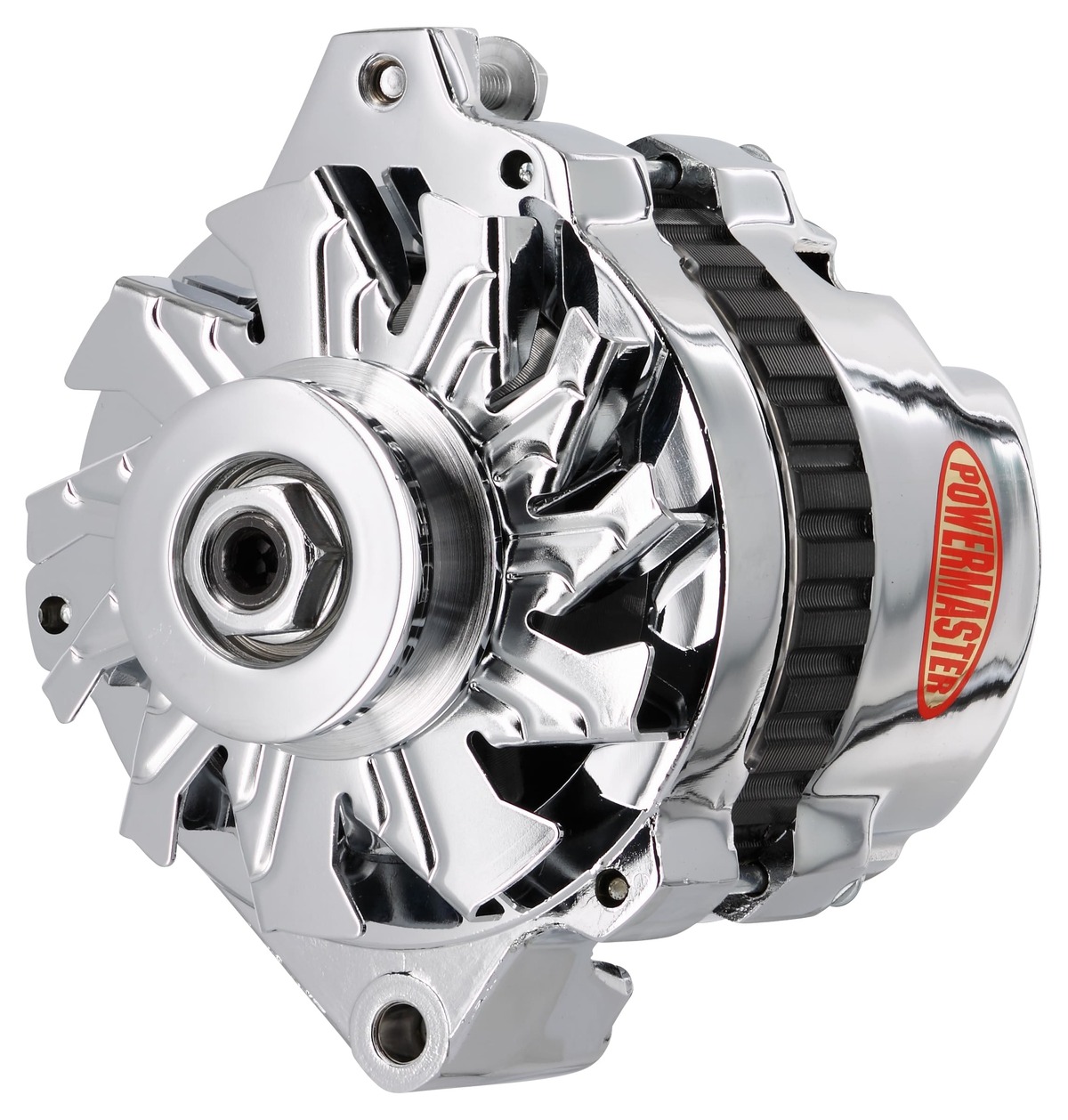
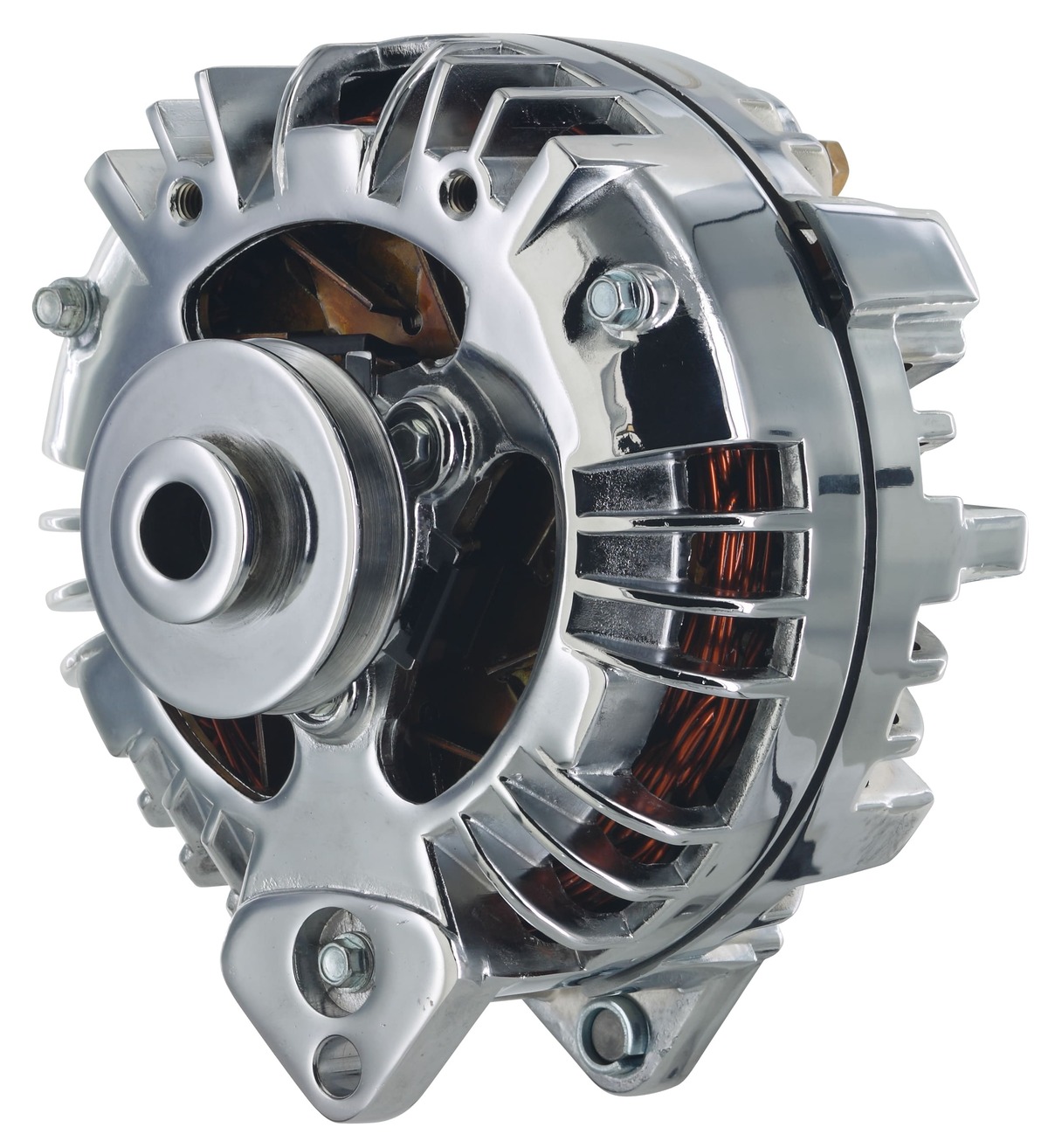
Charge Wires, Alternator Grounding, and Charge Lights
It is critical that the gauge of the charge wire is appropriate for the alternator’s output and the length of the wire. Too small a wire will result in excessive resistance, which can create enough heat to cause the wire to burn. And don’t make the mistake of thinking that because your car came with an alternator the wiring will be sufficient to handle an upgrade. High-output alternators require a sufficiently larger charge wire with quality terminals to handle the increased current.
As important as the alternator charge wire is, a ground wire is just as vital. Powermaster cautions that many mounting brackets are powder/clear coated, painted, or plated and as a result the alternator will not ground properly without a dedicated ground wire from the alternator housing to the engine block. When installing an alternator ground don’t skimp on the wire. In fact, Powermaster advises that the ground wire should be the same gauge as the charge wire.
For those wanting to retain an OEM charge indicator (or idiot light) many Powermaster alternators have an indicator light drive. For cars that had an OE externally regulated alternator a conversion wiring harness (PN 150) can be used. (Note: This applies only to GM 12si–style alternators, PNs 17294 and 37294). Powermaster’s Ford 3G alternators also provide the option of retaining the charge indicator light. They also offer many conversion harnesses for a plug-and-play connection when adapting newer alternators to older harnesses.
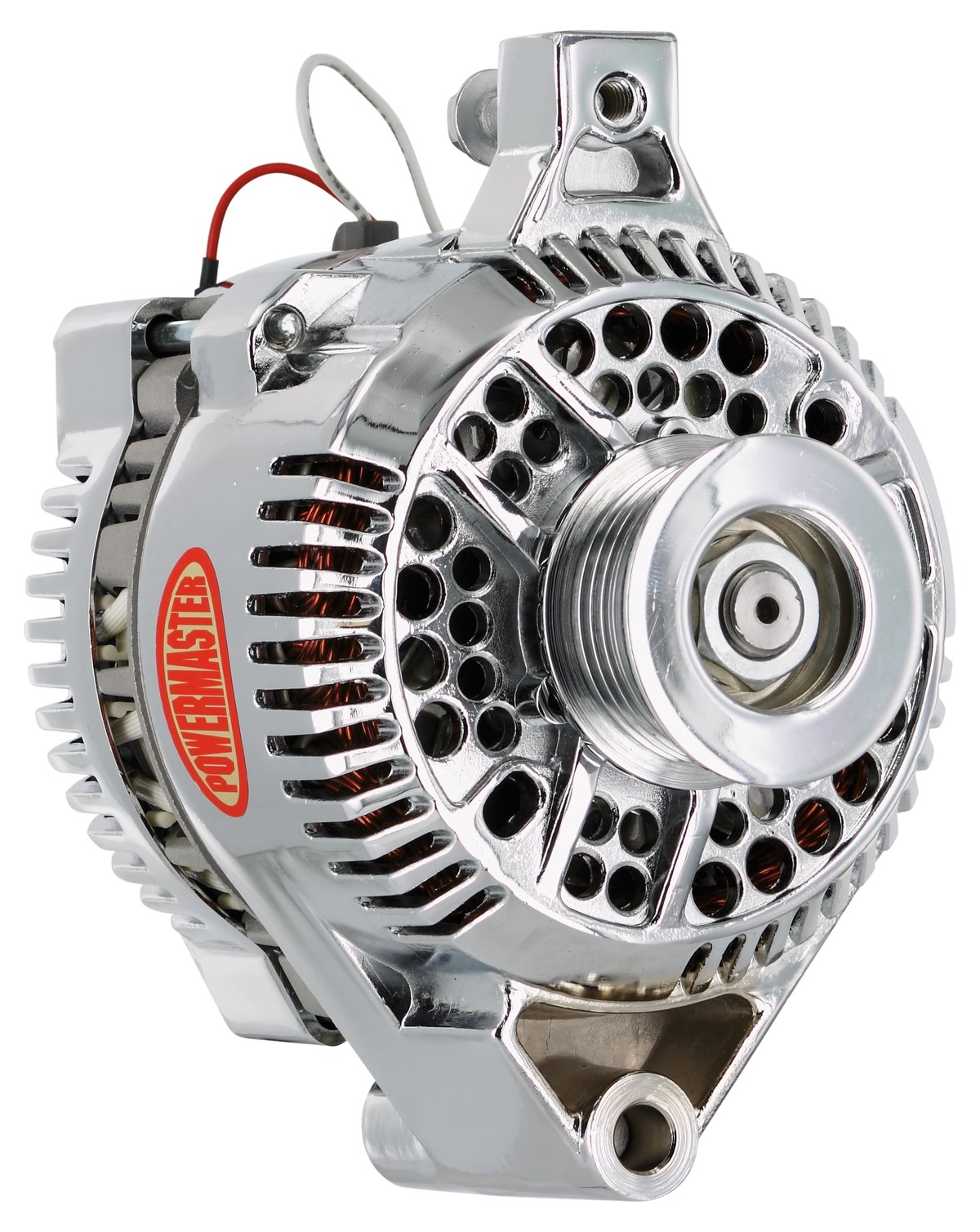
Belts and Pulleys
Up until the early ’80s V-belts were the standard drive system for engine-powered accessories. However, V-belts are limited in their capacity to transmit power. Powermaster cautions that slipping V-belts are a common problem with high-output alternators. Indications of a slipping belt are a hot or discolored pulley and belt dust on the alternator. Contrary to popular belief, it’s not overtightening the drive belt that knocks the front bearing out of an alternator, it’s heat from a slipping belt. To check the belt tension, Powermaster suggests putting a socket and ratchet on the alternator nut and turning it clockwise. If the alternator spins and the belt slips it’s not tight enough.
A better option than a V-belt is the now-common ribbed poly belt. First appearing on 1979 Mustangs, serpentine systems are capable of reliably driving all the accessories with one belt and are used with most aftermarket front drive systems in conjunction with a tensioner. But regardless of the type of belt used, poor-quality aftermarket pulleys are often a source of belt slippage. To eliminate them as a source of problems, Powermaster offers quality V-belt alternator pulleys in a variety of configurations as well as six- and eight-groove serpentine versions.
While relatively new to the aftermarket, overrunning alternator pulleys (OAP) and overrunning alternator decouplers (OAD) have been used in OEM applications for the last 10 years. An OAP is a one-way clutch that freewheels in one direction and locks in the other direction. This design allows the alternator’s rotor to slow down or coast to a stop, eliminating the “chirp” sound from the drivebelt that occurs when the engine decelerates quickly when shifting gears or is shut down. An OAD operates in a similar manner; it uses a one-way clutch along with a spring that “softens” the harsh engagement of a one-way clutch while absorbing torsional vibrations in the drivebelt system.
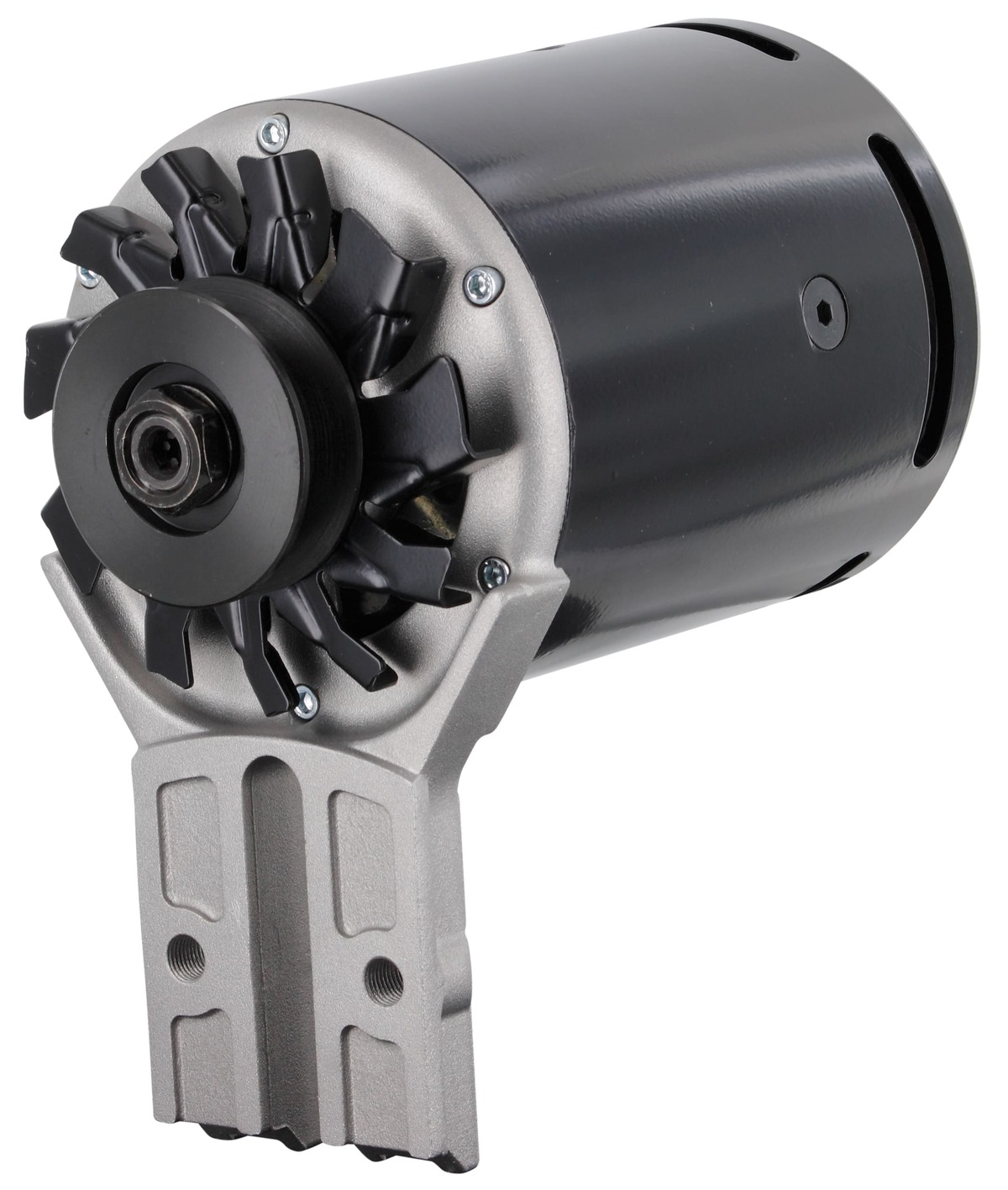
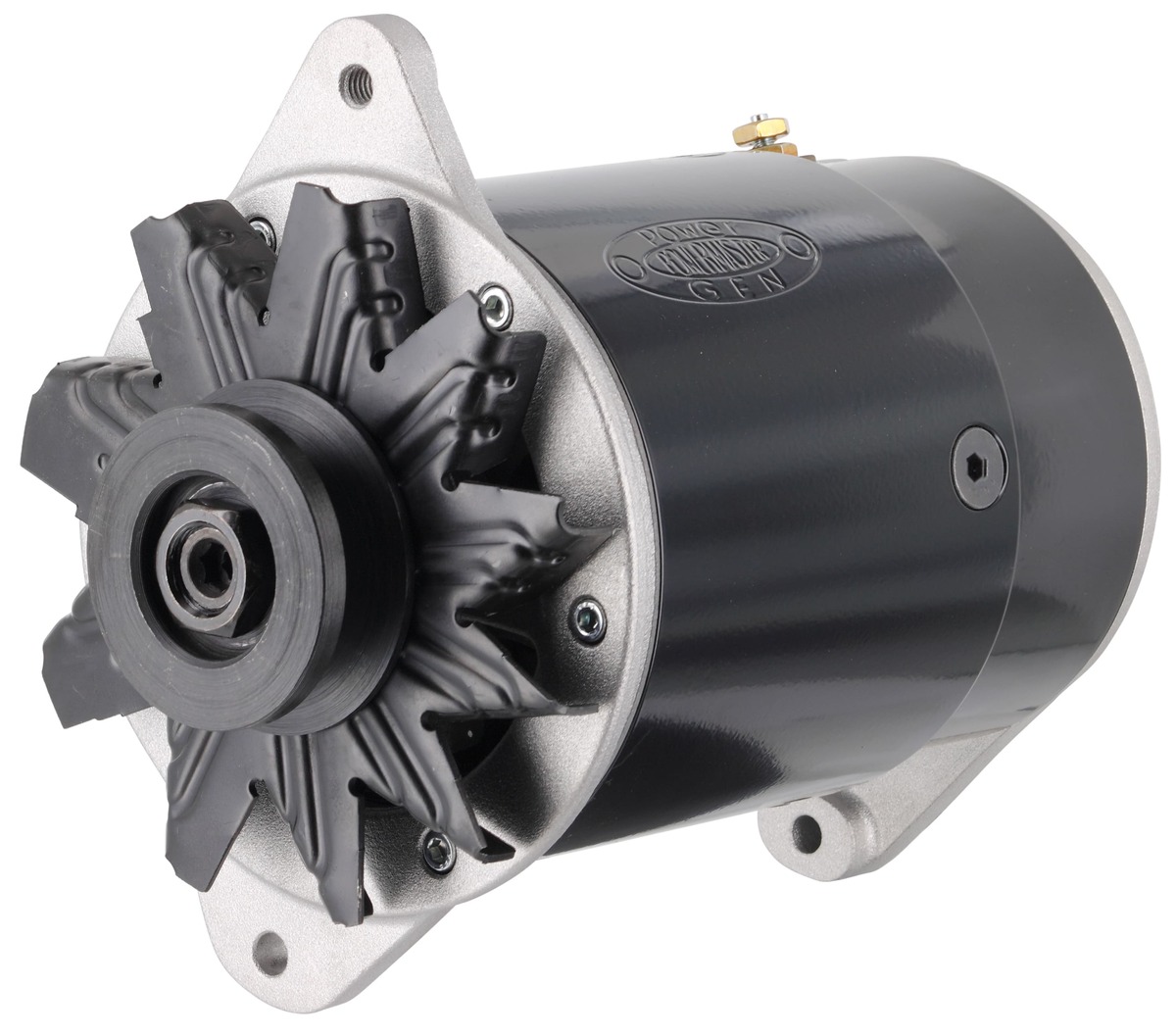
Take Your Pick Alternators
Powermaster has been in business for 25 years manufacturing and assembling performance starters and alternators in West Chicago. From a vintage-looking PowerGen to a high-output, HPR (hair pin replacement), small-frame alternator, Powermaster has what it takes to keep your hot rod amped up. MR
Source:
Powermaster Performance
(630) 957-4019
www.powermasterperformance.com
